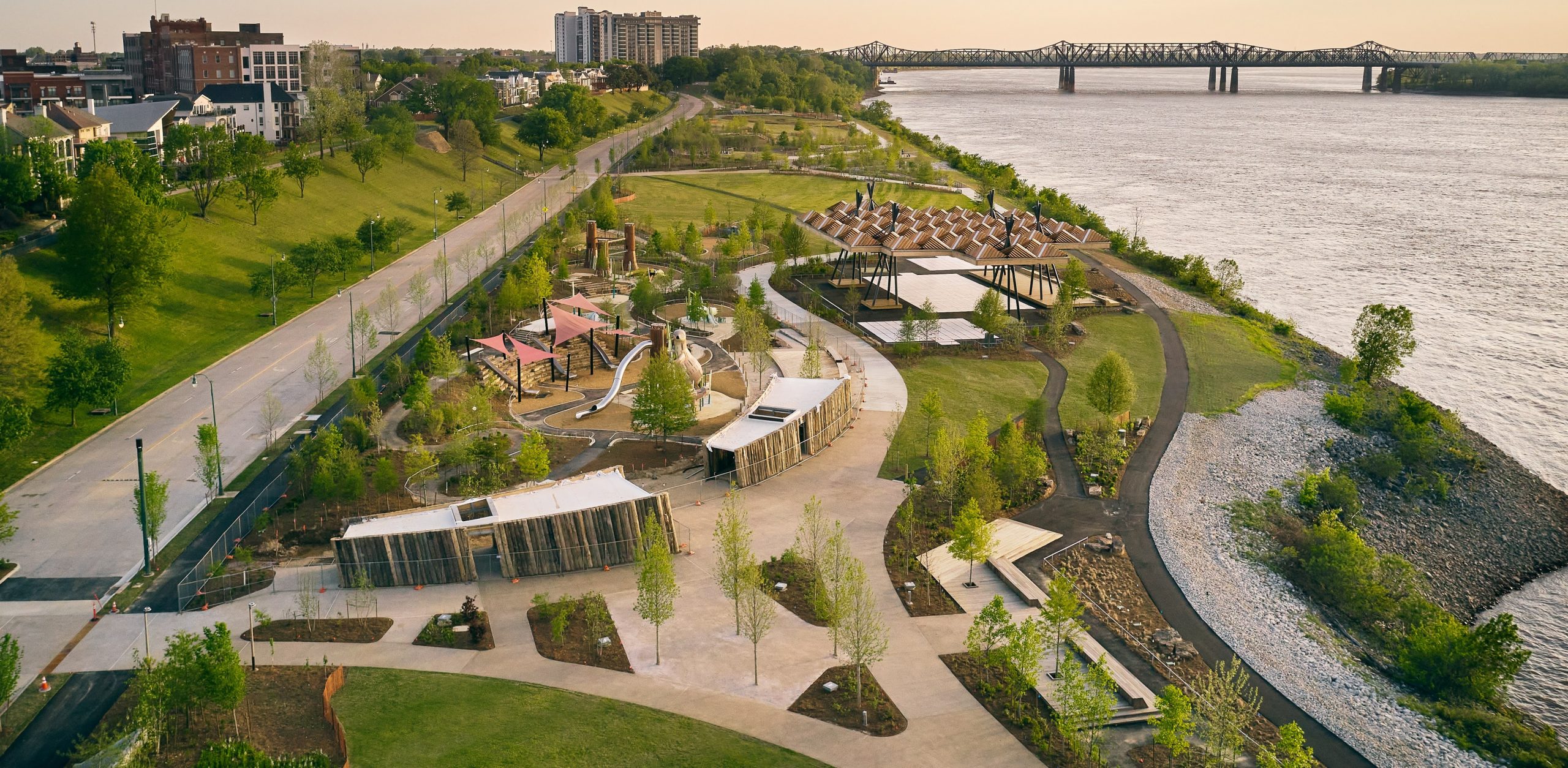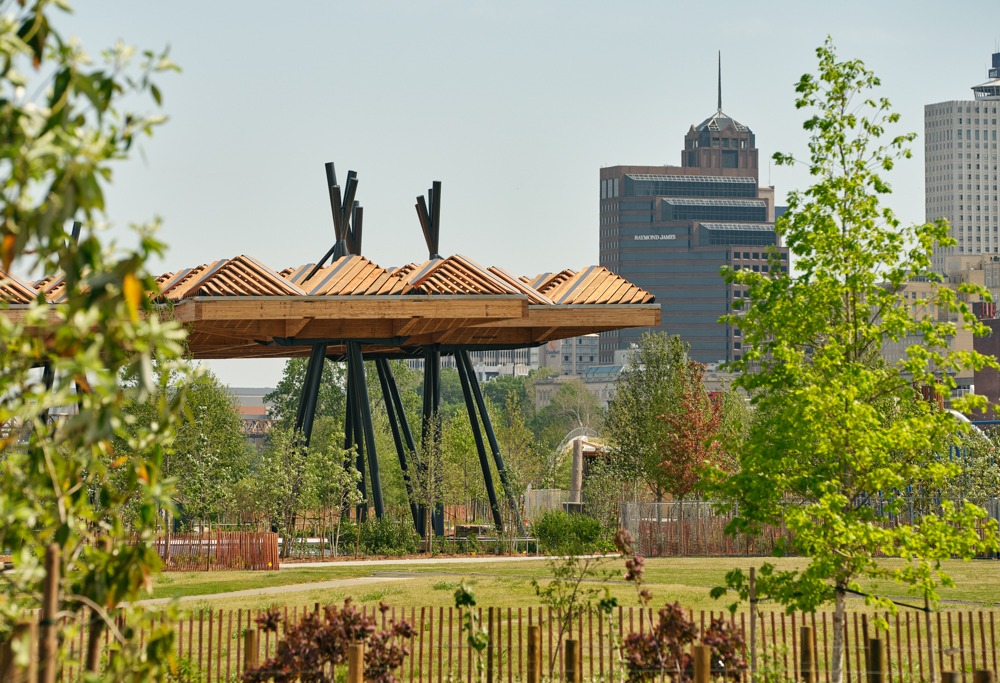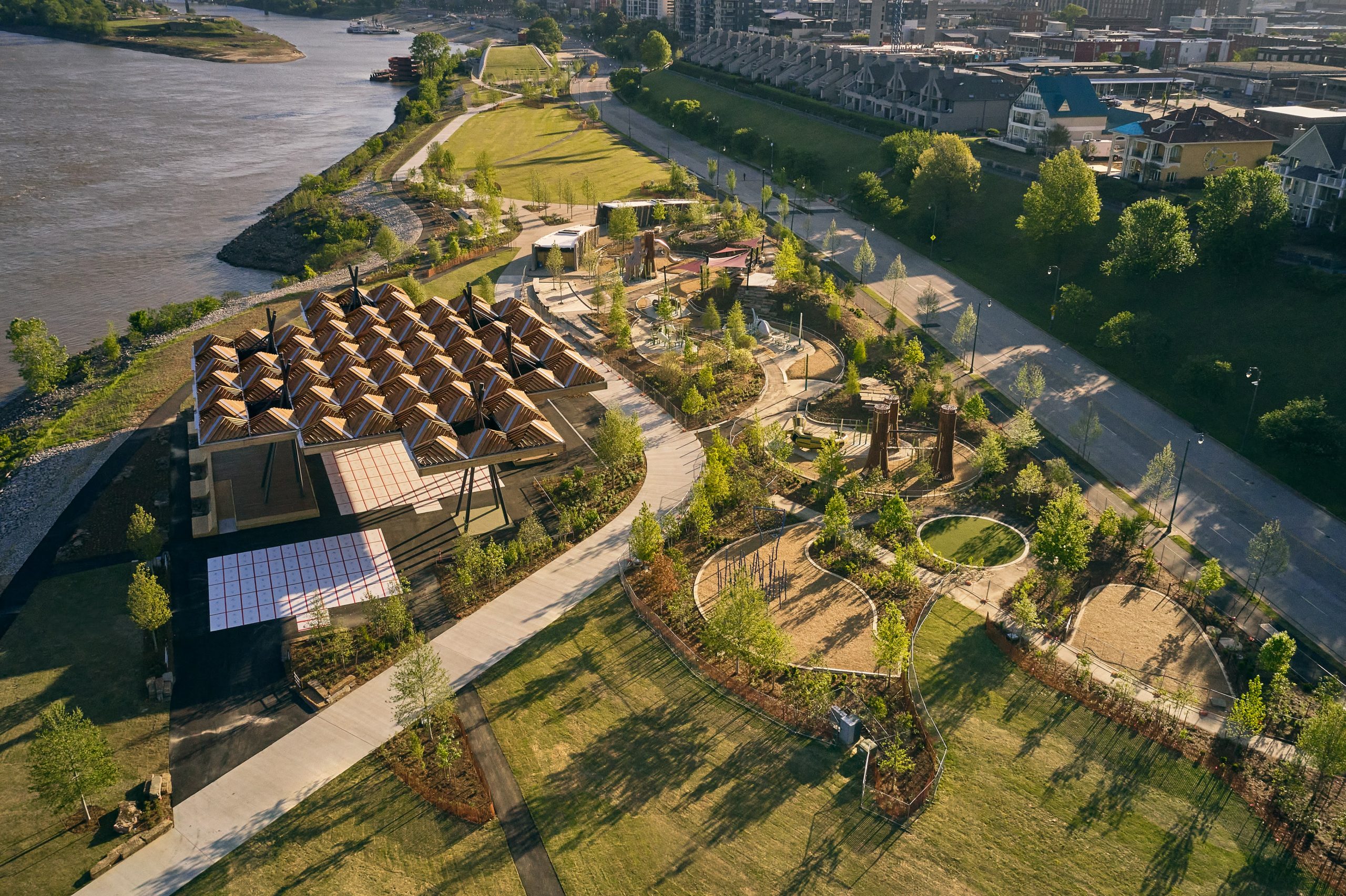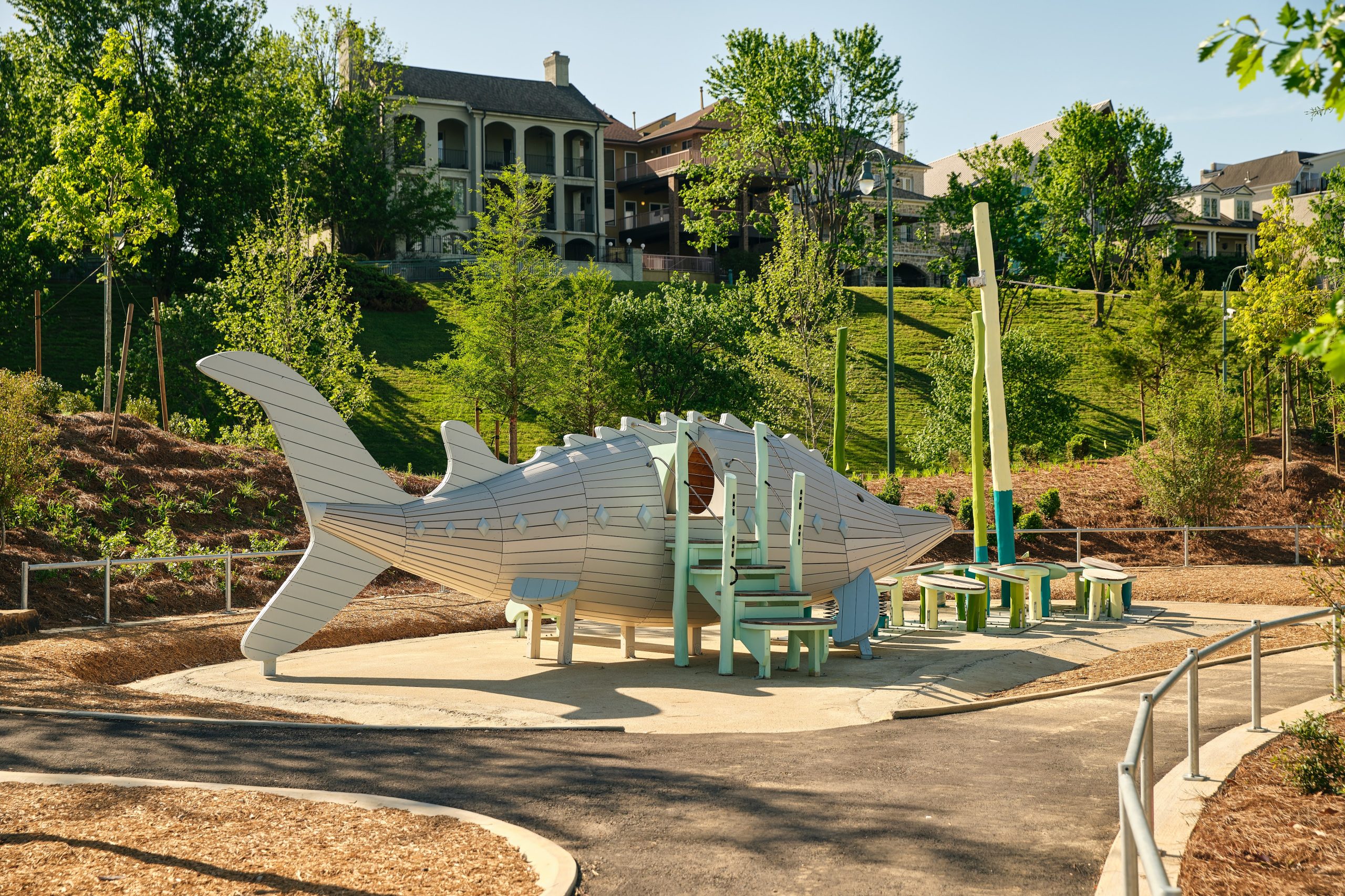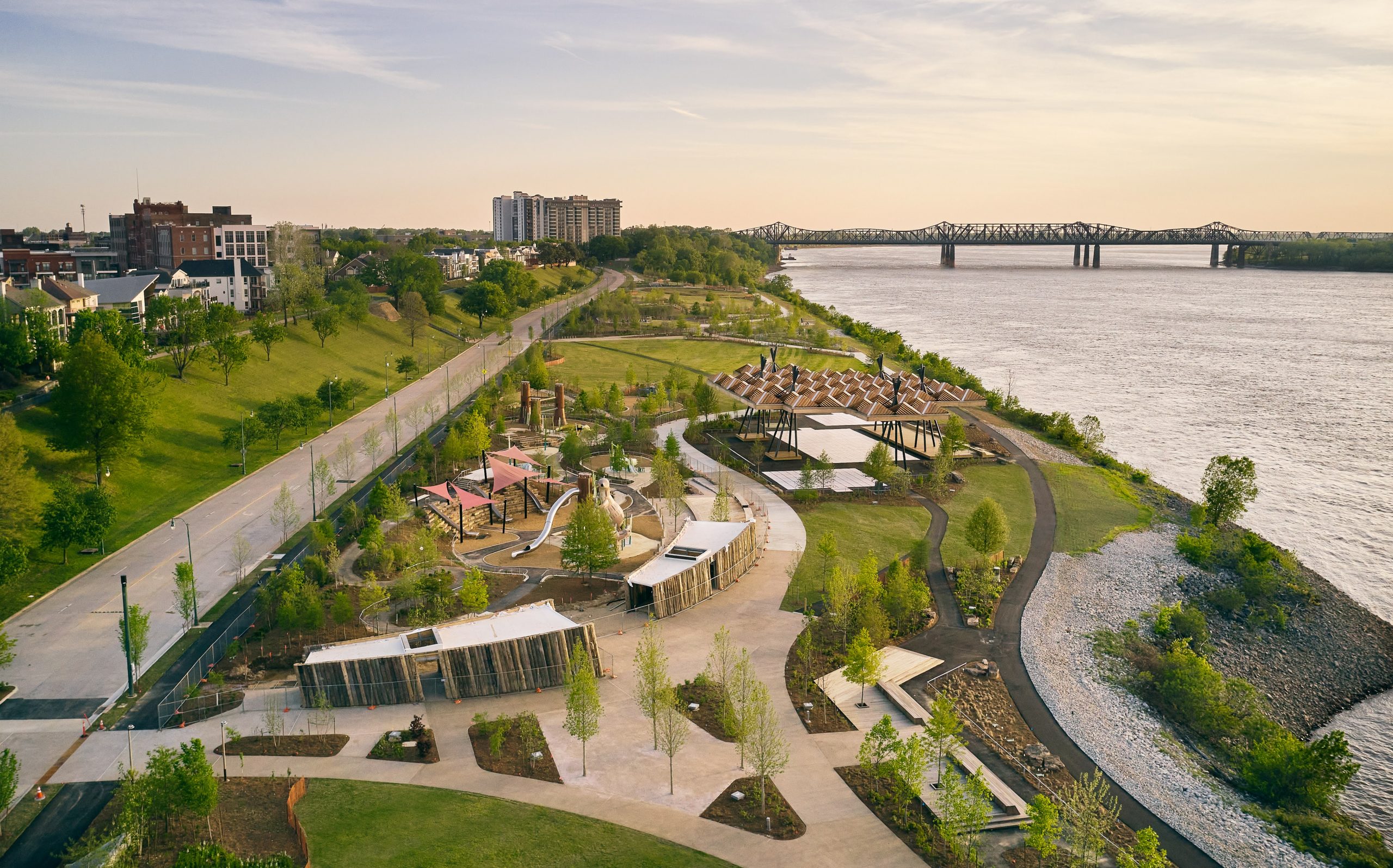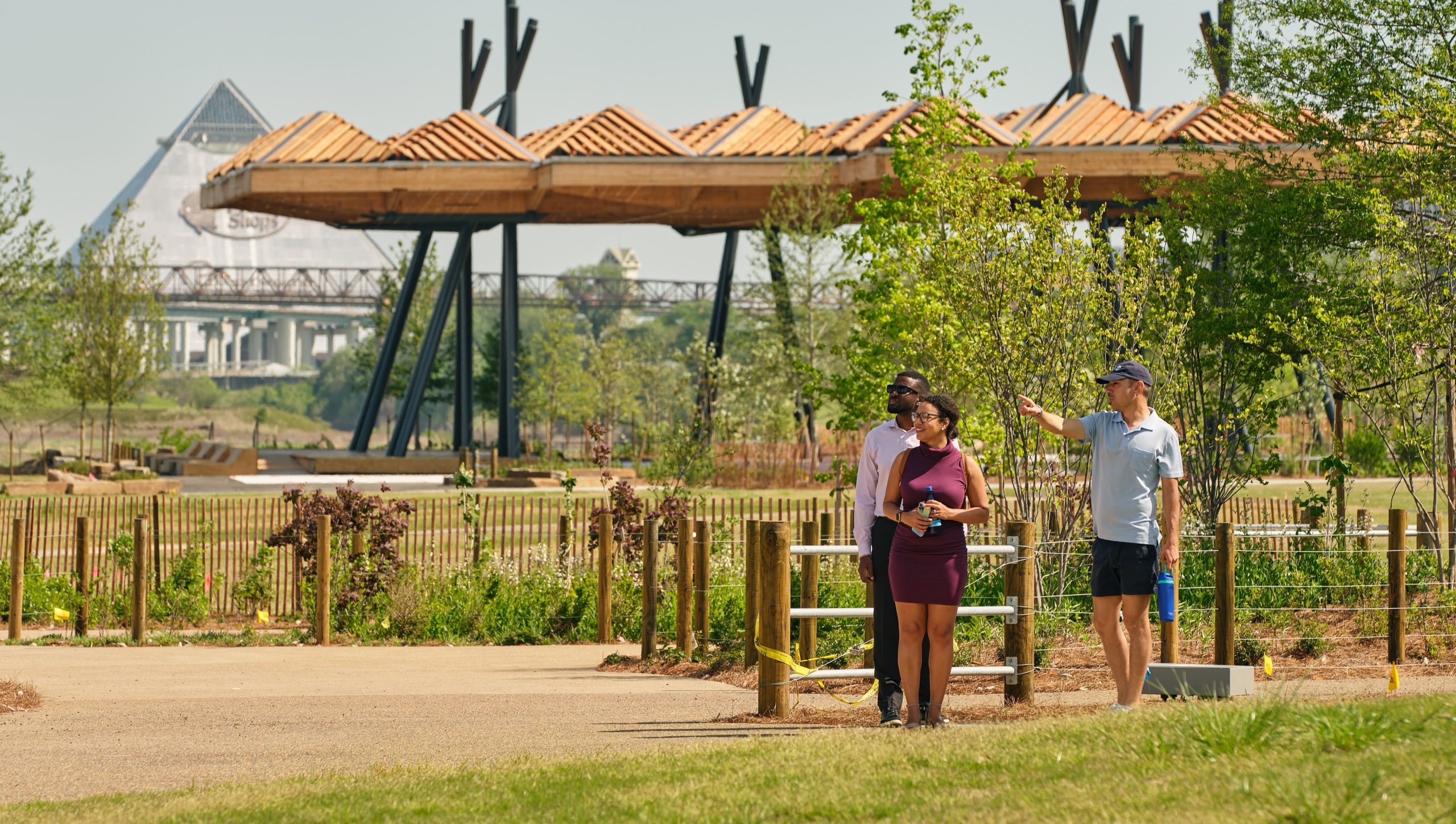Carol Coletta, president and CEO of the Memphis River Parks Partnership, doesn’t miss much.
In 2015 at the first Chicago Architecture Biennial, tucked under a stairway she discovered a project proposed by Jeanne Gang and her firm, Studio Gang. It was the reimagining of an urban police headquarters, one that carefully traced the history of the police presence in Chicago.
“I was taken with this notion of what a community institution should be – and turning it back into being of the community,” she says.
By 2017, Studio Gang was was working with the City of Memphis, and committed to working on a new riverfront plan for the Mississippi River. The firm wanted the riverfront deeply inset back into the community, to make the park work harder for the people and to deliver more benefits to the citizens of Memphis.
“I was really intrigued with her writing,” Coletta says. “She took 100 years of planning for the Memphis riverfront and thought about what we could pull together – she’d even studied the Mississippi River Flyway.”
The Memphis riverfront is a difficult site at best. The Army Corps of Engineers built a dike there to protect a 50-foot bluff above and behind it. In between the river and the bluff lies Riverside Drive, with four lanes of fast-moving traffic. To top it all off, the Mississippi River rises and falls 55 feet every year. The net result: only seven days of riverfront festivals out of 365 days each year.
But Gang, in collaboration with Kate Orff of SCAPE Landscape Architecture, saw immense possibilities. “She looked over it, and realized it wasn’t occupied,” Coletta says. “She saw the accessibility and visibility of that piece of ground and realized it could be activated again.”
At the heart of the plan is the redevelopment of Tom Lee Park, named after the African American who in 1925 saved 32 people from drowning after a ship overturned over in the river. Ground was broken on the new park in December, 2020. The new, 31-acre waterfront park will open on Labor Day in early September.
A centerpiece is its Sunset Canopy, a large timbered canopy designed by Studio Gang to host activities and events year-round – concerts, basketball, yoga classes and dance lessons. The basketball court will be painted with a geometric design by New York artist James Little, born and raised in Memphis.
Sculpted topography around the pavilion frames new views of the river, all planted with a hardy native plant palette. Beneath the park, a restored soil system underpins a new framework of trees, shrubs, grasses, and perennials— including over 300 oaks that will support, in turn, a vast array of bird and insect life.
“We planted a total of 1,000 new trees,” she says. “One team member went out and collected seeds from the region, and converted hothouses and grew the seeds and planted the seedlings in the park.”
The new design strengthens the connection between downtown Memphis and the river. It provides the first ADA-compliant access to the river, and safer pedestrian crossings of Riverside Drive.
It also includes the restoration of the riverfront’s historic Cobblestone Landing. A series of open lawns define four zones: the Civic Gateway, Active Core, Community Batture; and Habitat Terraces. While each has its own distinct character, they are unified by an overarching plan inspired by the hydrological forms of the Mississippi.
So from a very flat surface with almost no grass or pathways, there’s now a spectacular topography with scenic vantage points. The design creates rooms in the park, dampens the noise of the street, and protects people from that street.
“Now I walk in and say: ‘Is this the same piece of ground?’” she says.
In Memphis, the Mississippi is at its widest point, even when its water is low. There’s a great deal of barge traffic that many Memphians aren’t exposed to now, because the riverfront has been anything but inviting. But now it’s easily accessible and visible to everyone. “The rediscovery of commerce will be amazing to many,” she says. “And on the Flyway they’ll see geese, ducks, birds, bees and butterflies.”
The design team worked overtime to turn this site’s obstacles into opportunities. “The park gave them limitations, and they came back with a better plan,” she says. “The dike is there to protect the bluff – they were asked to create something ecologically rich on top of it, and they managed to do that.”
That’s because they’re experts at planning landscape and design interventions that work for all the people of Memphis.
And because Carol Coletta knows talent when she sees it.
For more, go here.

